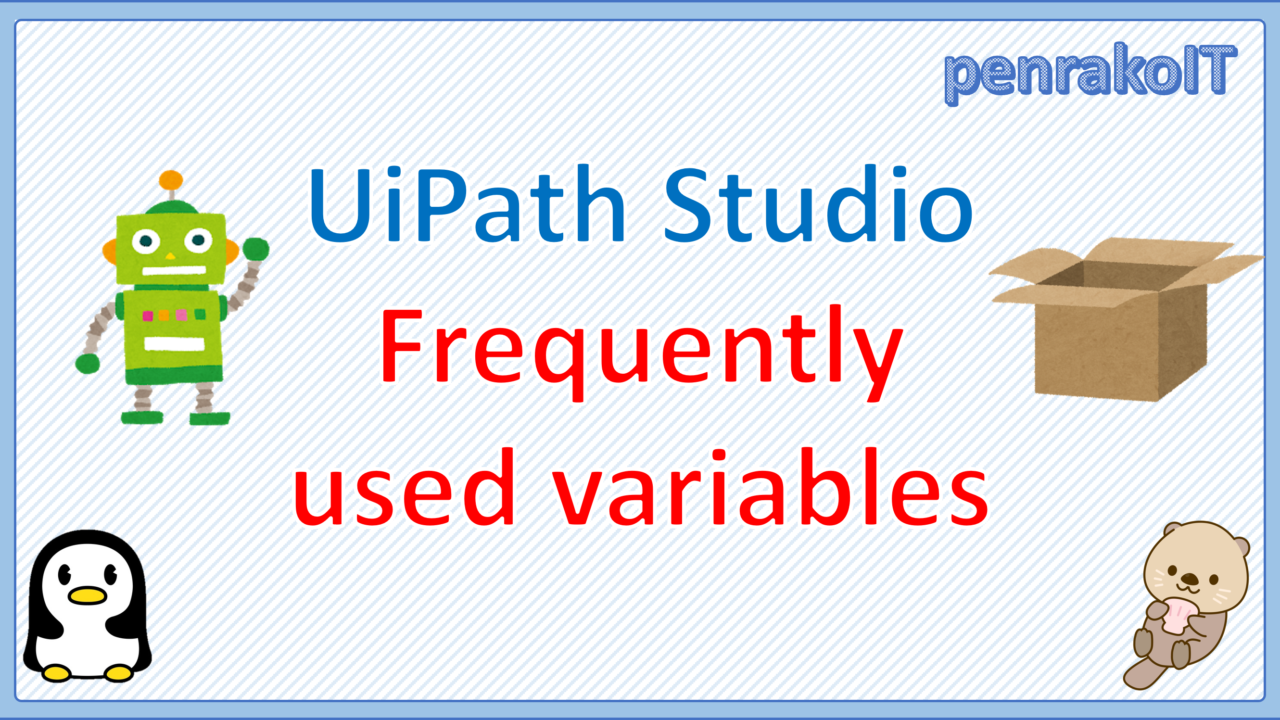Understanding variables is essential when developing with UiPath.
This article explains what a variable is, and the most commonly used variables String, Int32, Boolean, DateTime, Array, List, and DataTable.
\Save during the sale period!/
Take a look at the UiPath course on the online learning service Udemy
*Free video available
Related Articles Learn the Creation Techniques f UiPath robotics creation with Udemy’s online courses that take it up a notch
This site was created by translating a blog created in Japanese into English using the DeepL translation.
Please forgive me if some of the English text is a little strange
About Variables
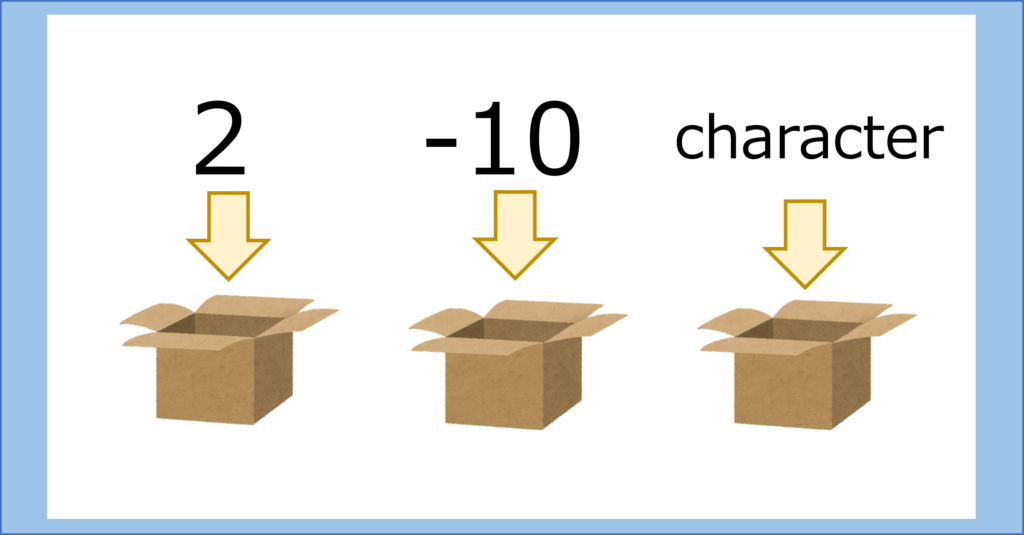
What is a variable?
A variable is a box that stores numbers, strings, etc.
Just as in mathematics, assigning 2 to a variable x is expressed as x=2, in UiPath we store numbers and strings in a box called x.
Variable Types
In mathematics, we only assign numerical values to variables, but in UiPath, we can assign non-numerical values as well.
The problem is that when you try to calculate between variables, you cannot do so if a non-numeric variable is assigned to the variable.
For example, if
x=2
y=letter
-> x+y = Cannot be calculated!
If one of them has a letter in it, as in the following example, it cannot be added.
In UiPath, there is a type that indicates what is in the variable.
By specifying the type, it is possible to prevent variables from not being able to be added together as described above.
Variable scope
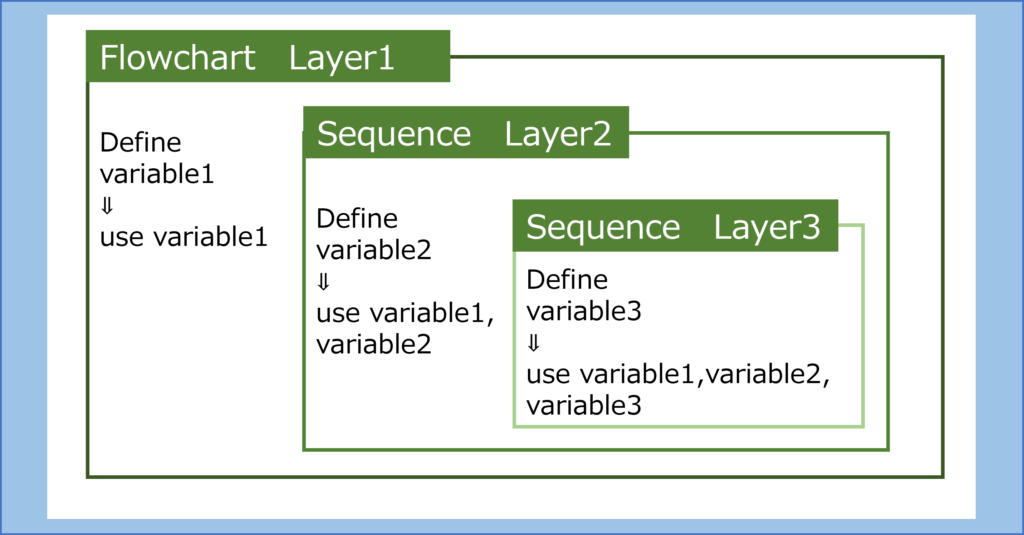
When setting variables in Uipath, you need to determine the scope.
A scope is the range in which a variable can be used, and a variable set in the upper scope can be used in the lower scope.
Conversely, variables set in the lower scope cannot be used in the upper scope.
Setting a variable in a higher scope is convenient because it can be used in all hierarchies, but if extra variables are defined, readability is reduced and it can be a source of bugs.
The scope is set by clicking [Variables] in the bottom row and selecting the scope for each variable.
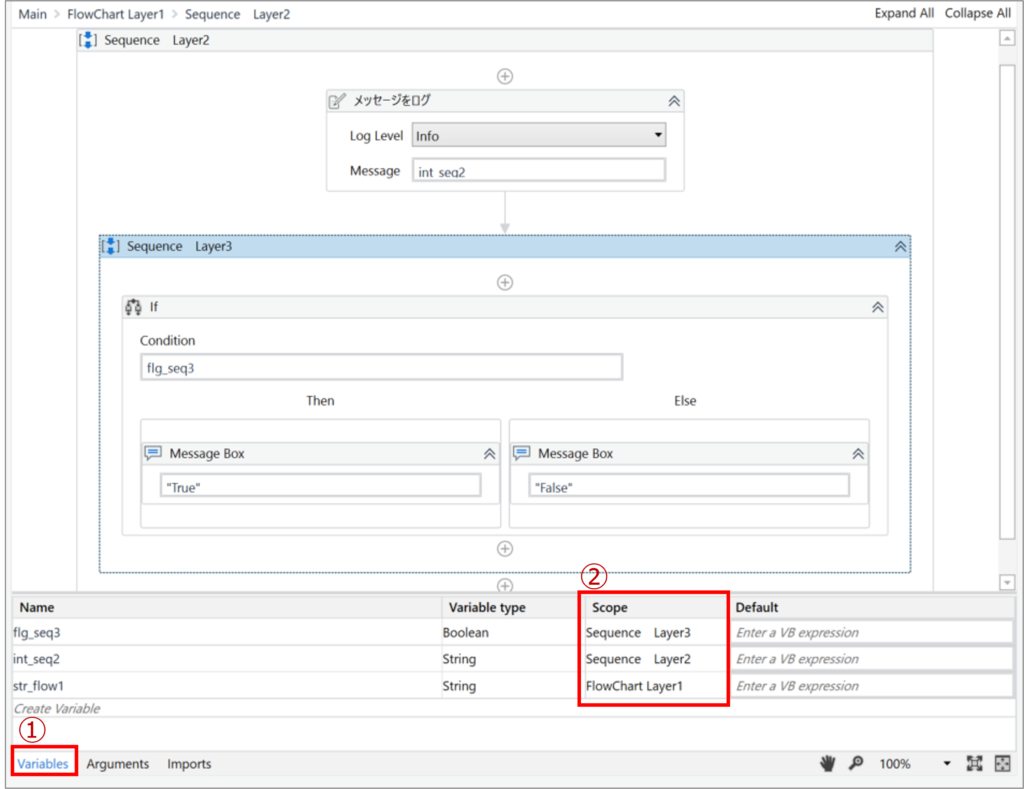
Commonly used single data variable types
This chapter describes the types of single data variables that are frequently used.
String Type
To store a string in a variable, use the String type.
String is set as the default type.
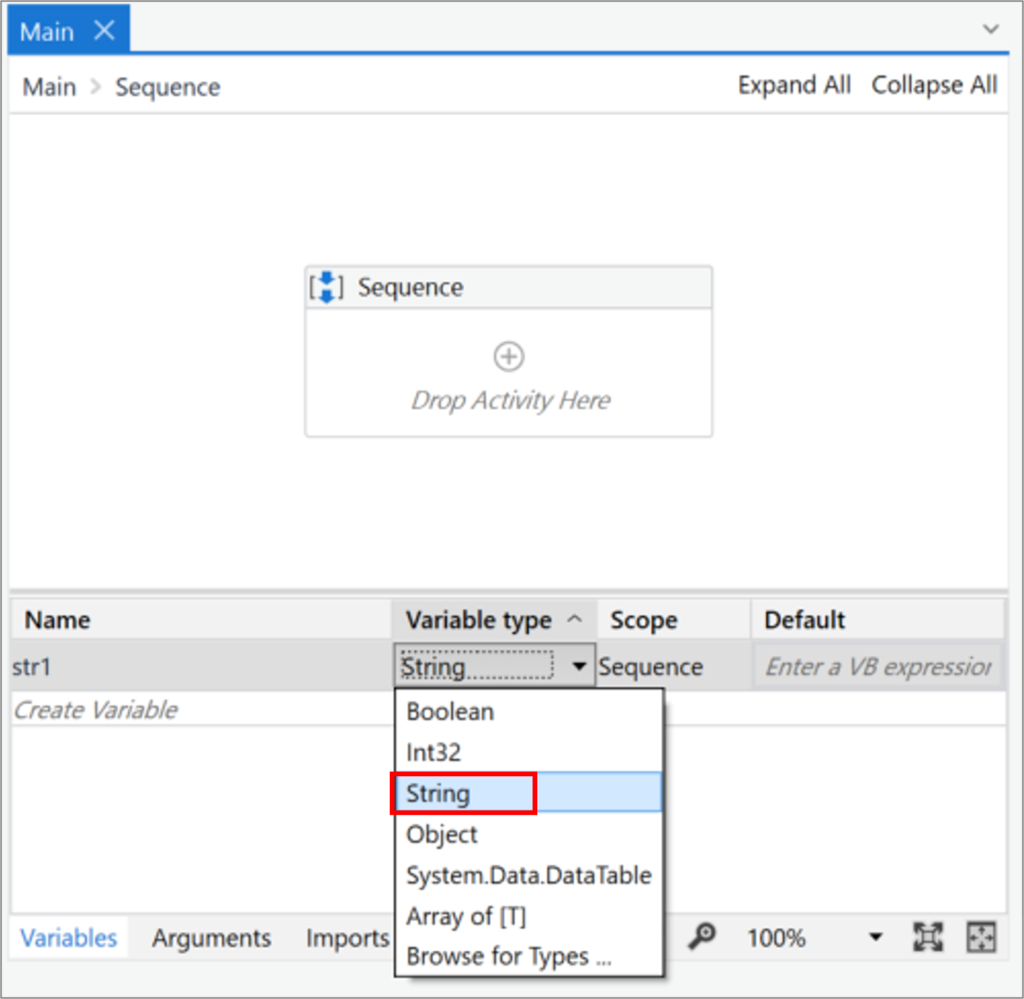
Example of String type
"abcde"
"123"
Int32 Type
To store an integer in a variable, use the Int32 type.
Int32 is included in the default choices for variable types.
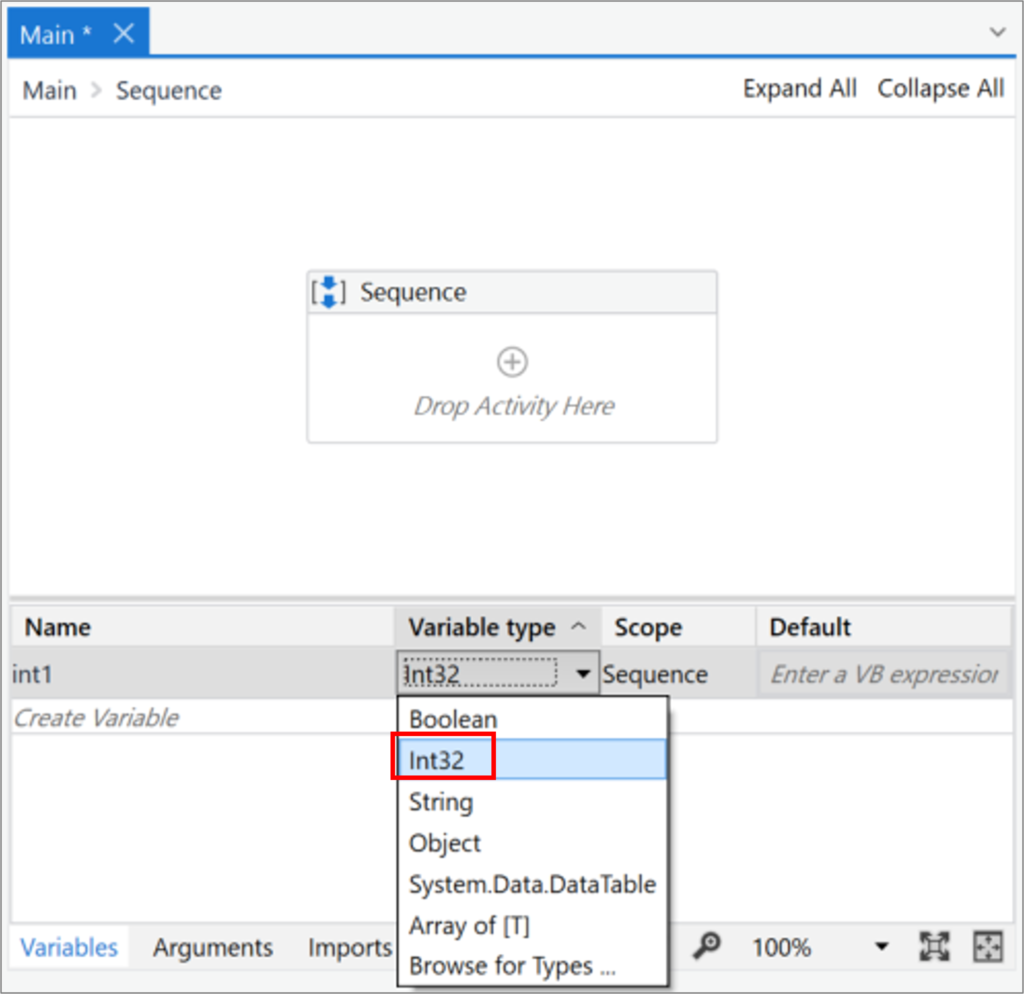
Int32 type example
123
-123
Boolean Type
変数にTrueかFalseを保存する場合は、Boolean型を使用します。
Boolean is included in the default choices for variable types.
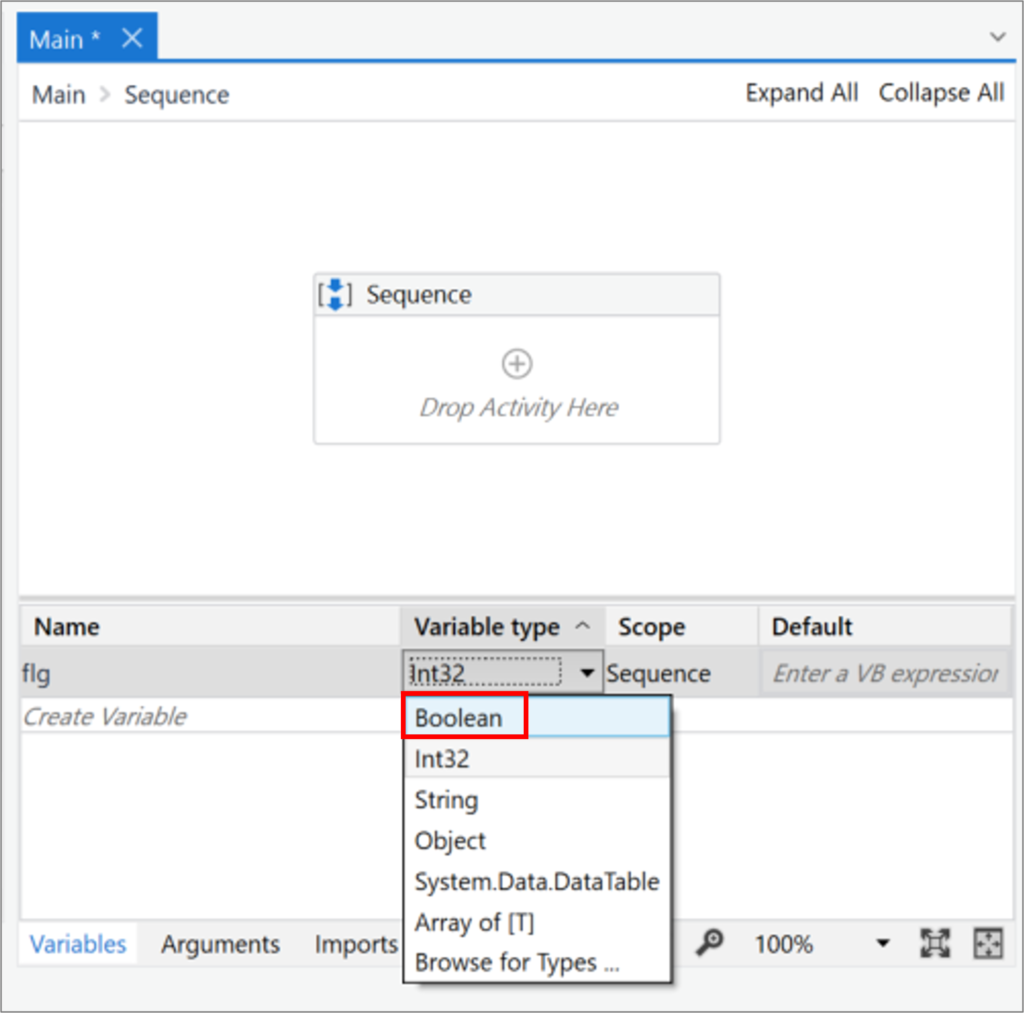
Example of Boolean type
True
False
DateTime Type
If you want to store the date and time in a variable, use the DateTime type.
Since DateTime is not included in the default variable types, set it by following the steps below.
(1)Click on [Browse for Types] for the variable type options.
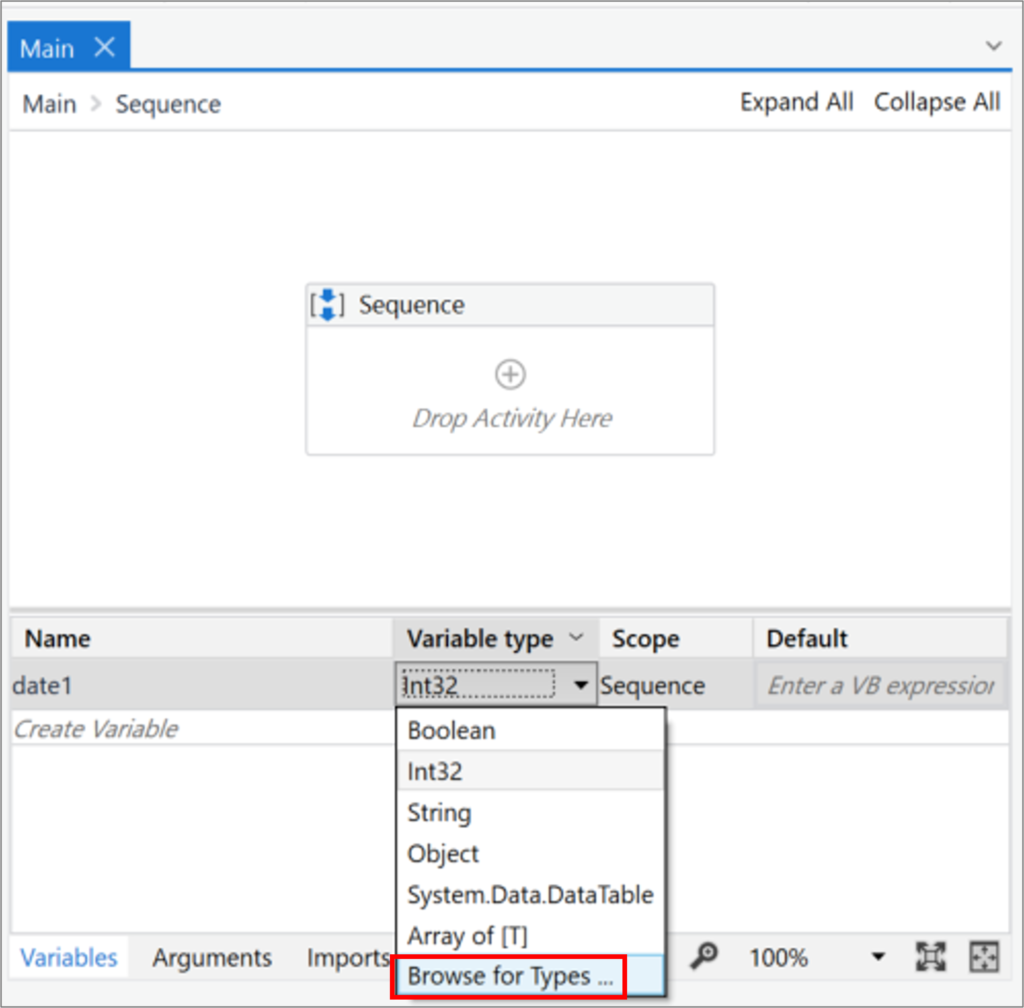
(2)Enter [System.DateTime] in the search field, click [DateTime], and then click [OK].
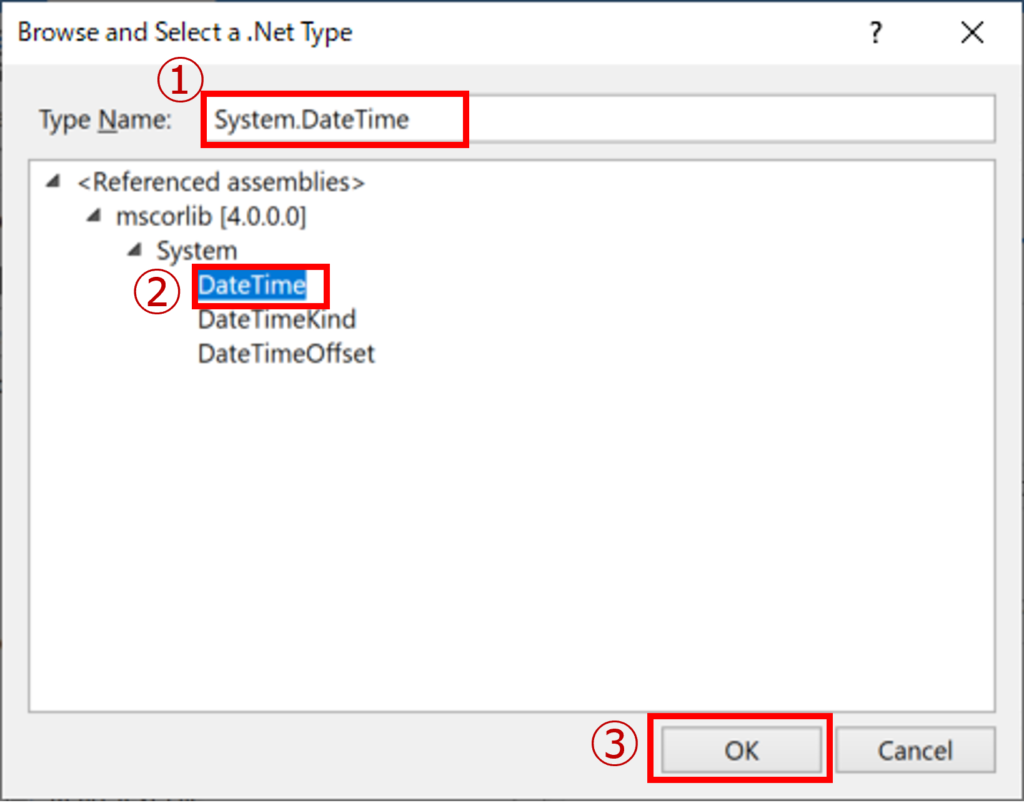
(3)Make sure the DateTime type is set.
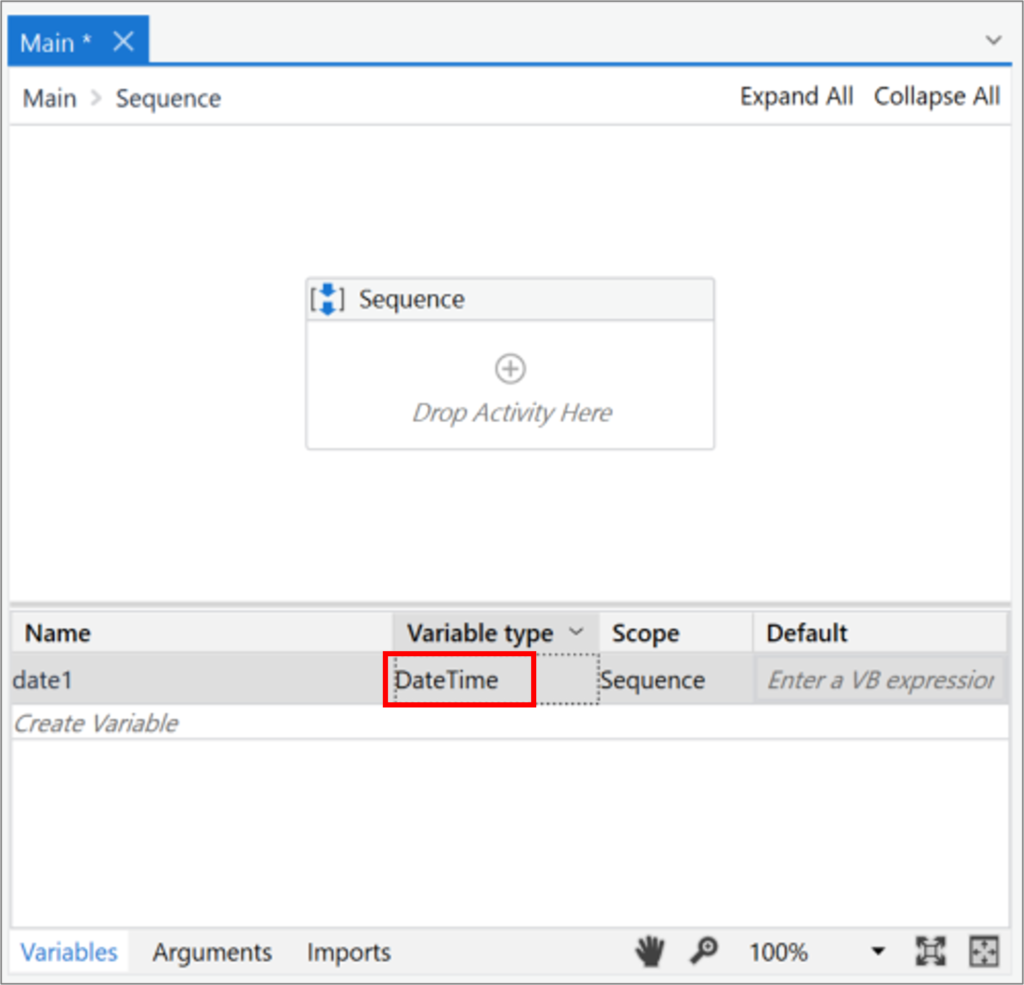
Commonly used multiple data variable types
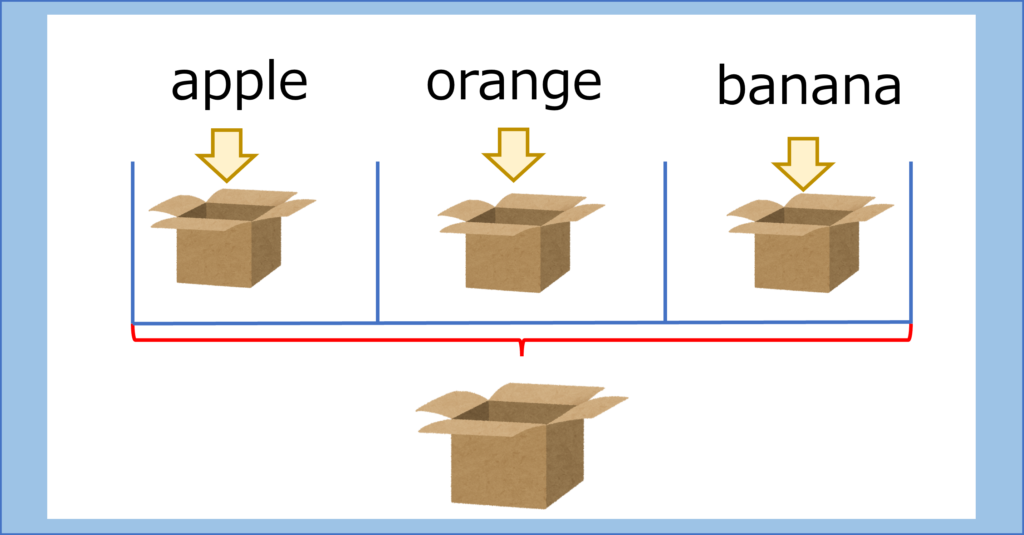
In this chapter, we will introduce the types of variables for multiple data.
As you can see in the image above, multiple variables (boxes) are combined into one variable (box), which is the type of multiple data variable.
Array Type
If the number of elements is fixed, use the Array type (or the List type described below).
The Array type is included in the variable type defaults and is set by the following procedure.
(1) [Array of [T]] Click on
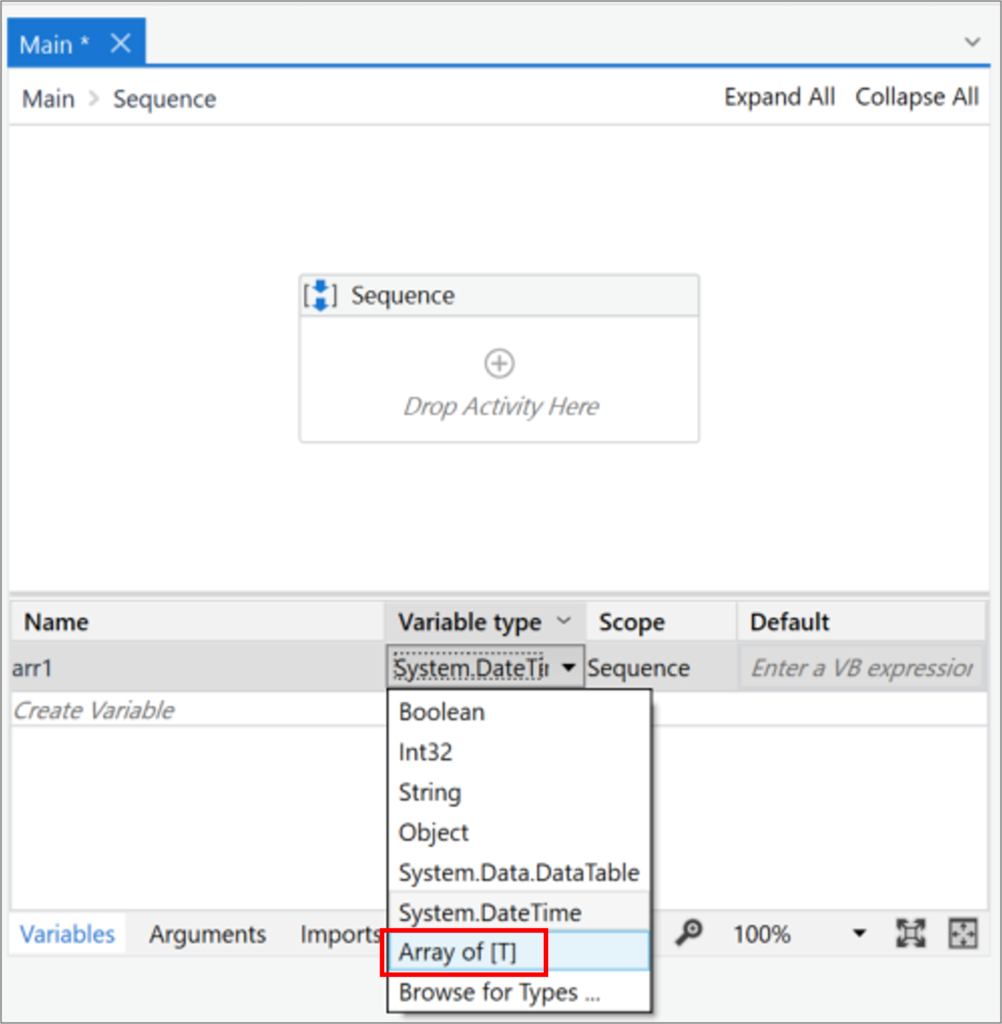
(2) Select the type to be stored in the array (in the image below, we have selected String).
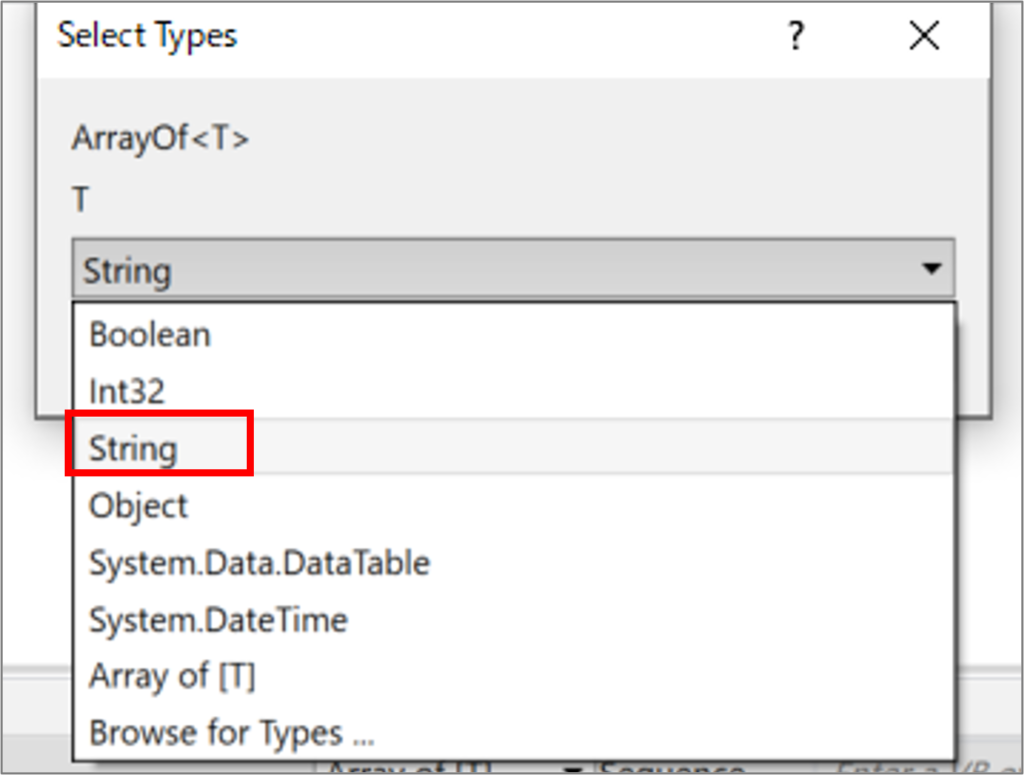
(3) Click [OK].
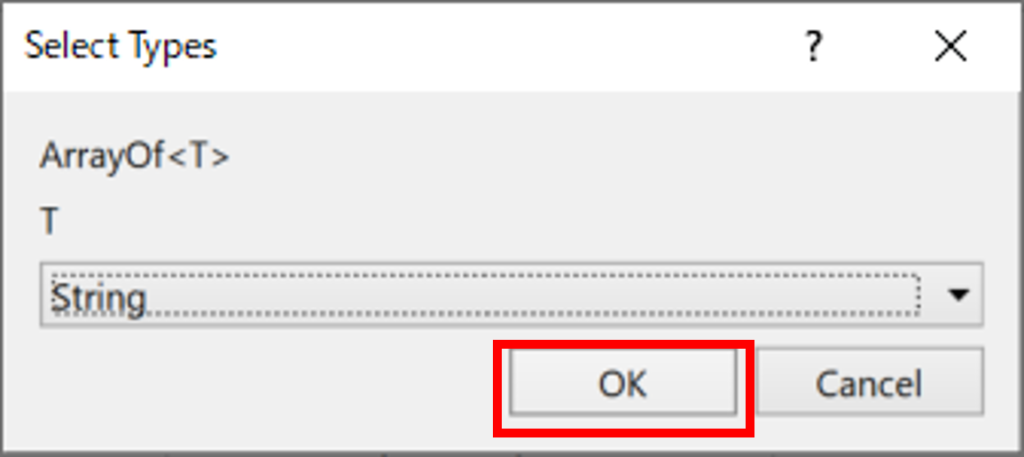
(4) Make sure that the type of the variable is the type you set [].
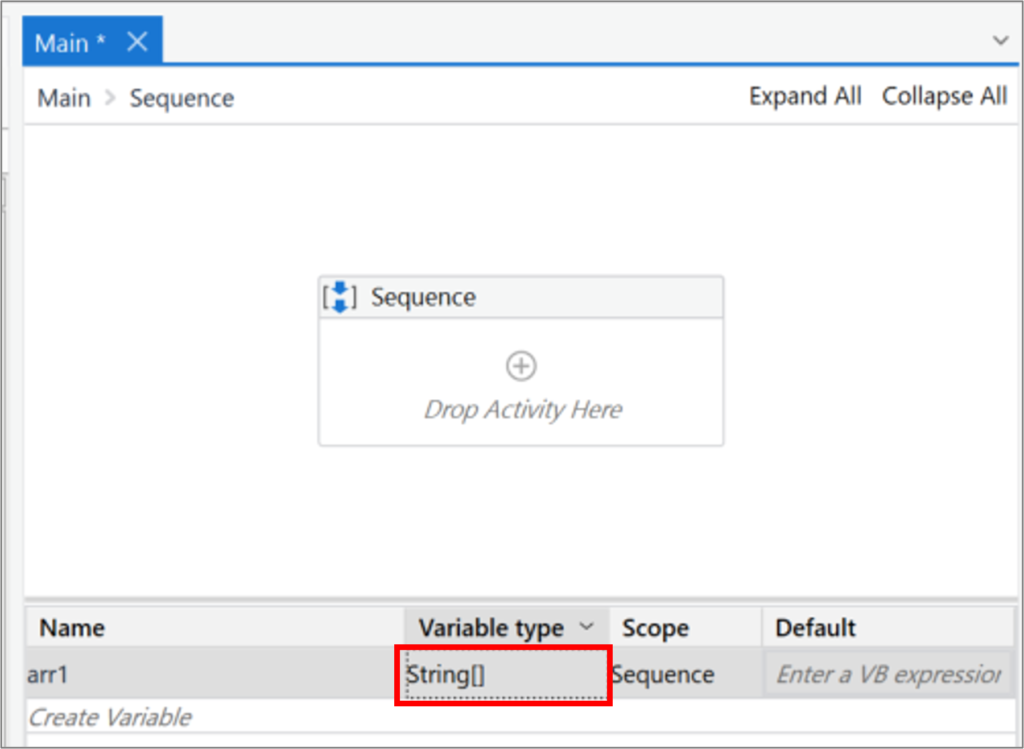
Example of Array(String) type
{"apple", "orange","banana"}
List Type
If the number of elements is variable, use the List type.
The List type is not included in the default variable types, so set it by following the steps below.
(1)Click the variable type pull-down, and then click [Browse for Types].
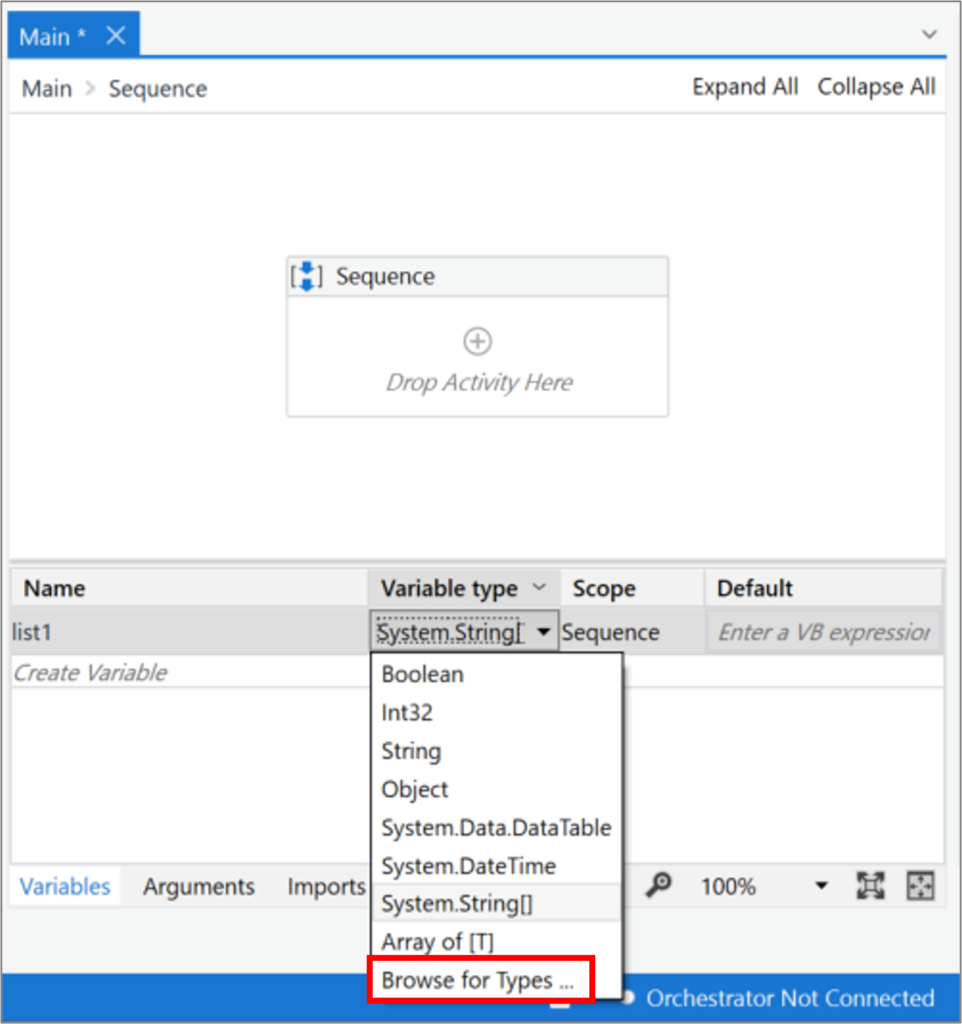
(2) Enter “System.Collections.Generic.list” in the search field and click [List<T>].
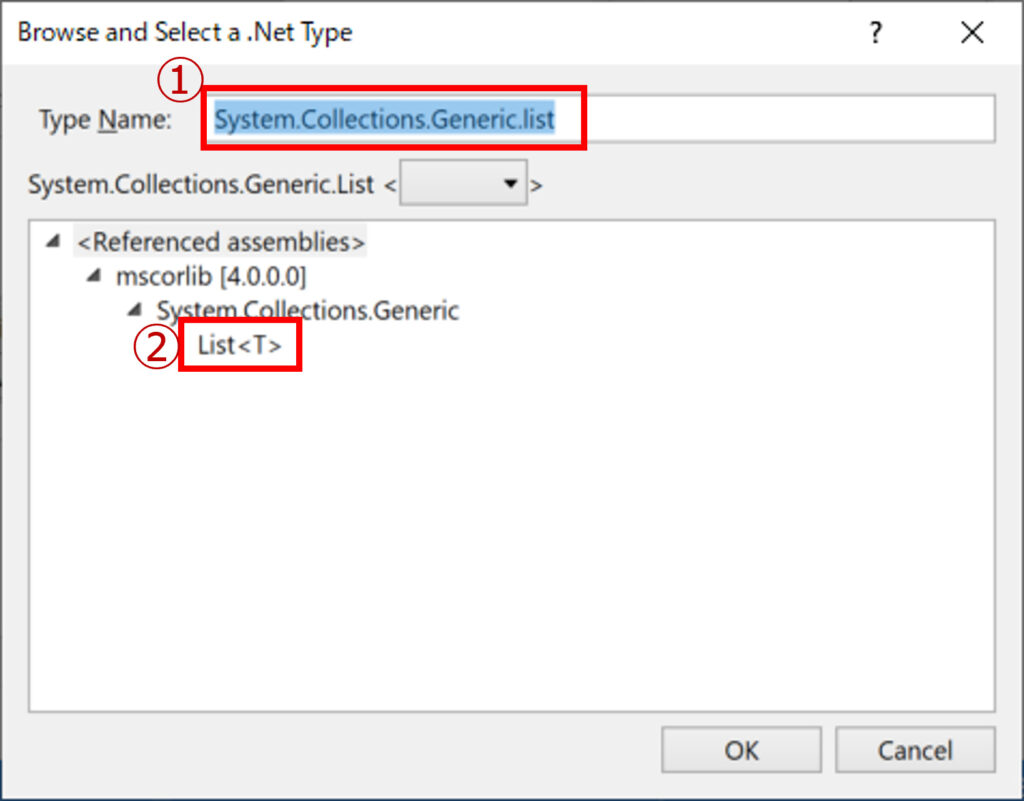
(3)Select the type in the list (String is selected in the figure below)
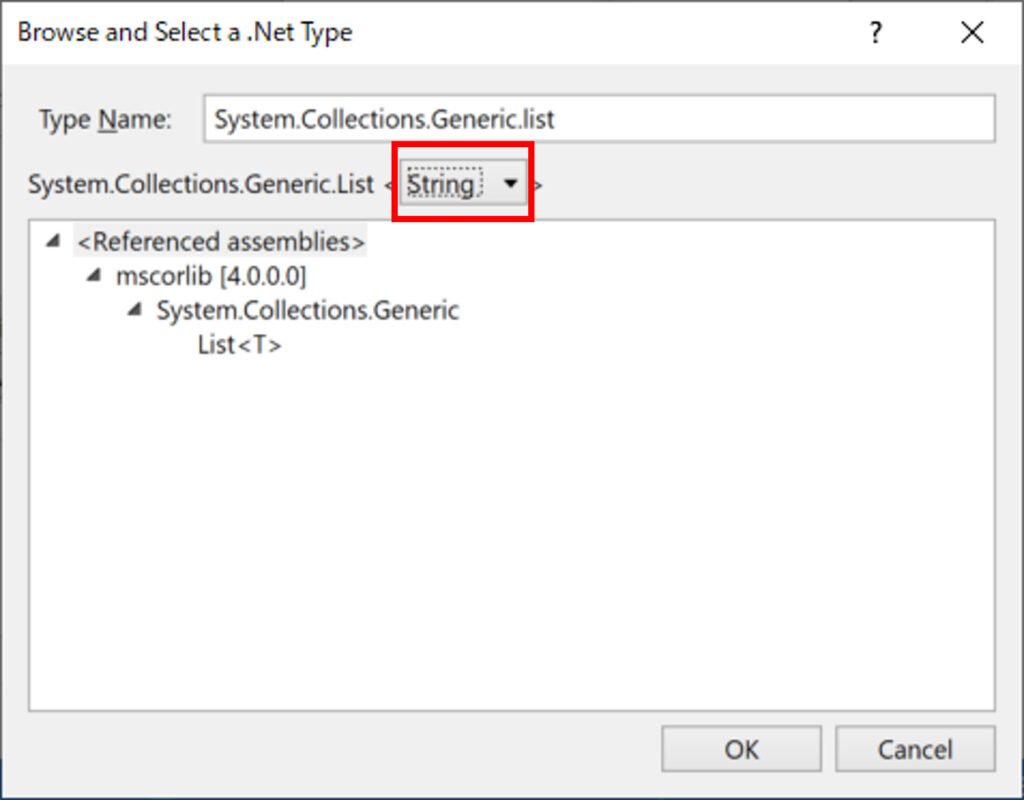
(4) Click [OK]
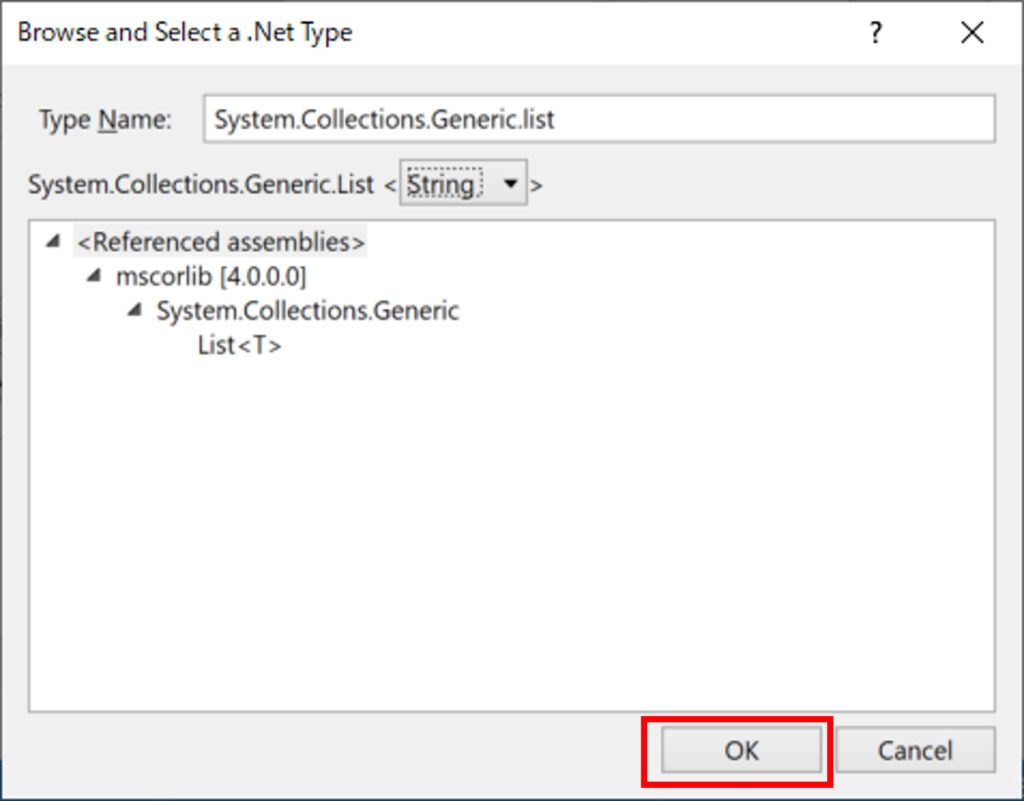
(5) Make sure it is a List<selected type>.
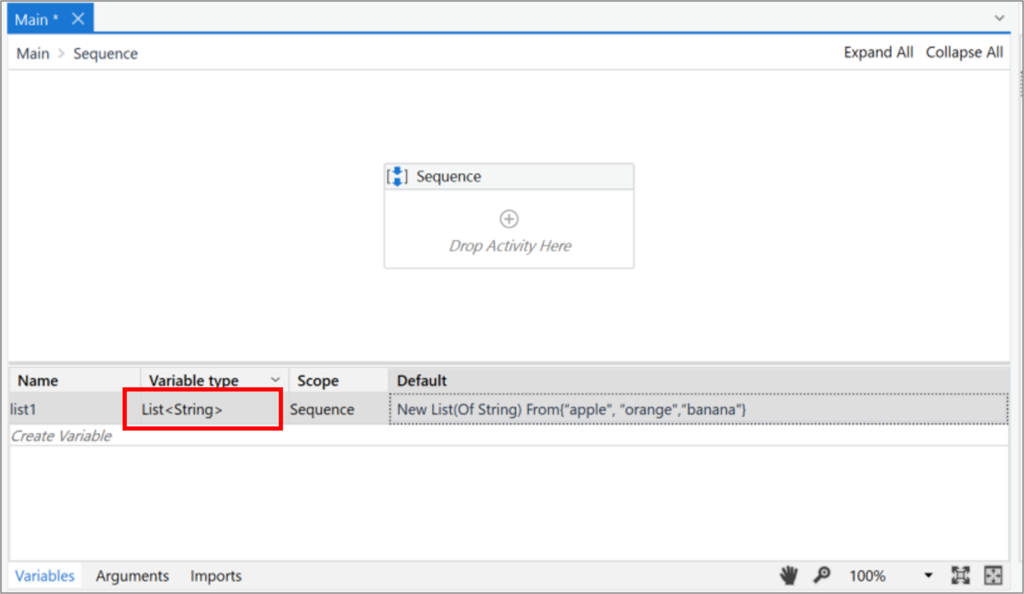
Example of initialization for List(String) type
New List(of String)
Example of initializing a List(String) type and setting the initial value
New List(of String) From{"apple", "orange","banana"}
tabular data
DataTable Type
For tabular data, use the DataTable type.
The DataTable type is included in the default choices for variable types.
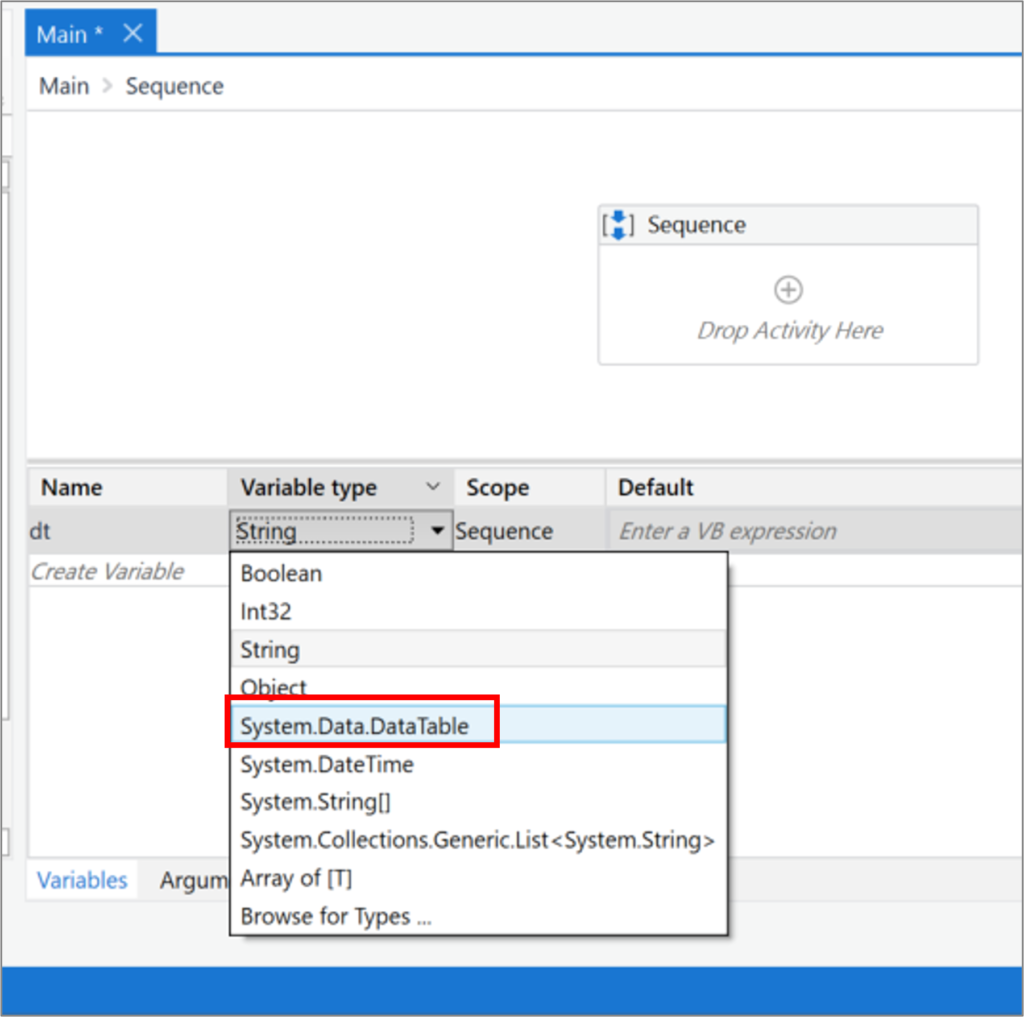
Summary
- A variable is a box that stores numbers, strings, etc.
- Variables determine the scope in which they can be used.
- Variables often used in UiPath are String, Int32, Boolean, DateTime, Array, List, and DataTable.
\Save during the sale period!/
Take a look at the UiPath course on the online learning service Udemy
*Free video available
Related Articles Learn the Creation Techniques f UiPath robotics creation with Udemy’s online courses that take it up a notch
same category UiPath

Japanese IT engineer with a wide range of experience in system development, cloud building, and service planning. In this blog, I will share my know-how on UiPath and certification. profile detail / twitter:@fpen17
